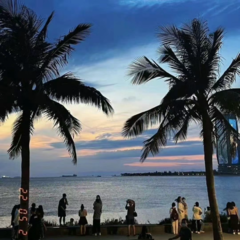Connie Smith
by John Bush In less than a year, Connie Smith moved from being a small-town Ohio housewife to country stardom with a number one single to her credit. Perhaps overly compared to and identified with Patsy Cline, Smith is still considered by many to be one of the best and most underrated vocalists in country history. Her lonely desperation came straight from the heart, also: Her father was abusive when she was a child, causing Smith to suffer a mental breakdown while she was in her teens. Smith was born Constance Meadows on August 14, 1941, in Elkhart, IN, but spent her early life first in West Virginia and later in Ohio. She married and became a housewife in the early 60s, singing occasionally on local TV shows around her home in Marietta, OH. She was singing near Columbus in August 1963 when country star Bill Anderson heard her and offered his help in getting a contract. She signed to RCA after a few months and recorded several selections in July 1964 with Chet Atkins at the helm. Once a Day — written especially for her by Anderson — was released as a single in September and hit the top of the country charts, reigning as number one for eight weeks. Smiths follow-up, Then and Only Then, hit number four (even the flip side reached the Top 25), and her Top Ten streak continued unabated until late 1968, including the big hits If I Talk to Him, Aint Had No Lovin, and The Hurtins All Over. Meanwhile, her success began to take a toll; constant appearances on the road, in films, and on The Lawrence Welk Show pushed Smith to the brink of suicide in 1968. She credits her Christian faith with saving her from killing herself. After Smith recovered from the pressure of being a fawned-over female country star, she began to balance chart success with a lighter schedule. Though her country hits were rarer than in her mid-60s heyday, she was a better performer — and person — for it. Smith still managed the Top Tens You and Your Sweet Love in 1969, I Never Once Stopped Loving You the following year, and Just One Time in 1971. Her most successful year during the 70s was 1972. She recorded three big hits: the number five Just What I Am, the number seven If It Aint Love (Lets Leave It Alone), and the number eight Love Is the Look Youre Looking For. By 1972, Smith began to incorporate more gospel into her act. With the help of her third husband, evangelist Marshall Haynes, she turned her live show into a traveling gospel road show and signed with Columbia, which permitted her to record more straight gospel songs. Though the material didnt score as well on the charts as her secular singles had, she managed to stay in the Top 20 during much of the 70s. After she signed with Monument in 1977, most of her singles dropped out of the Top 40. Though she has not been a commercial force since the 70s, Smith continues to perform with the Grand Ole Opry and in 1998 returned with her first LP in many years, a self-titled effort issued on Warner Bros.


 Stay Alive - 闫泽欢
Stay Alive - 闫泽欢
























